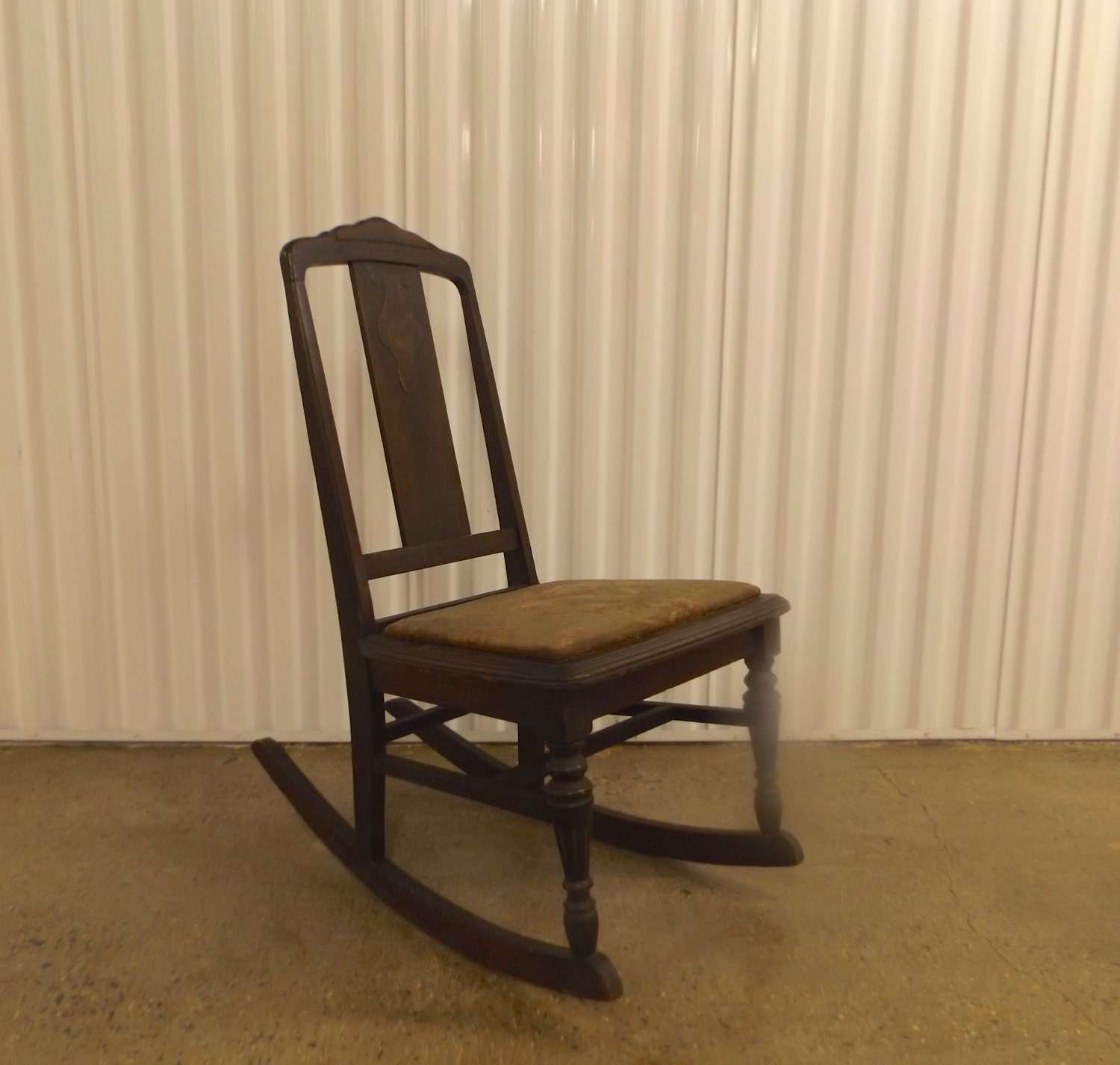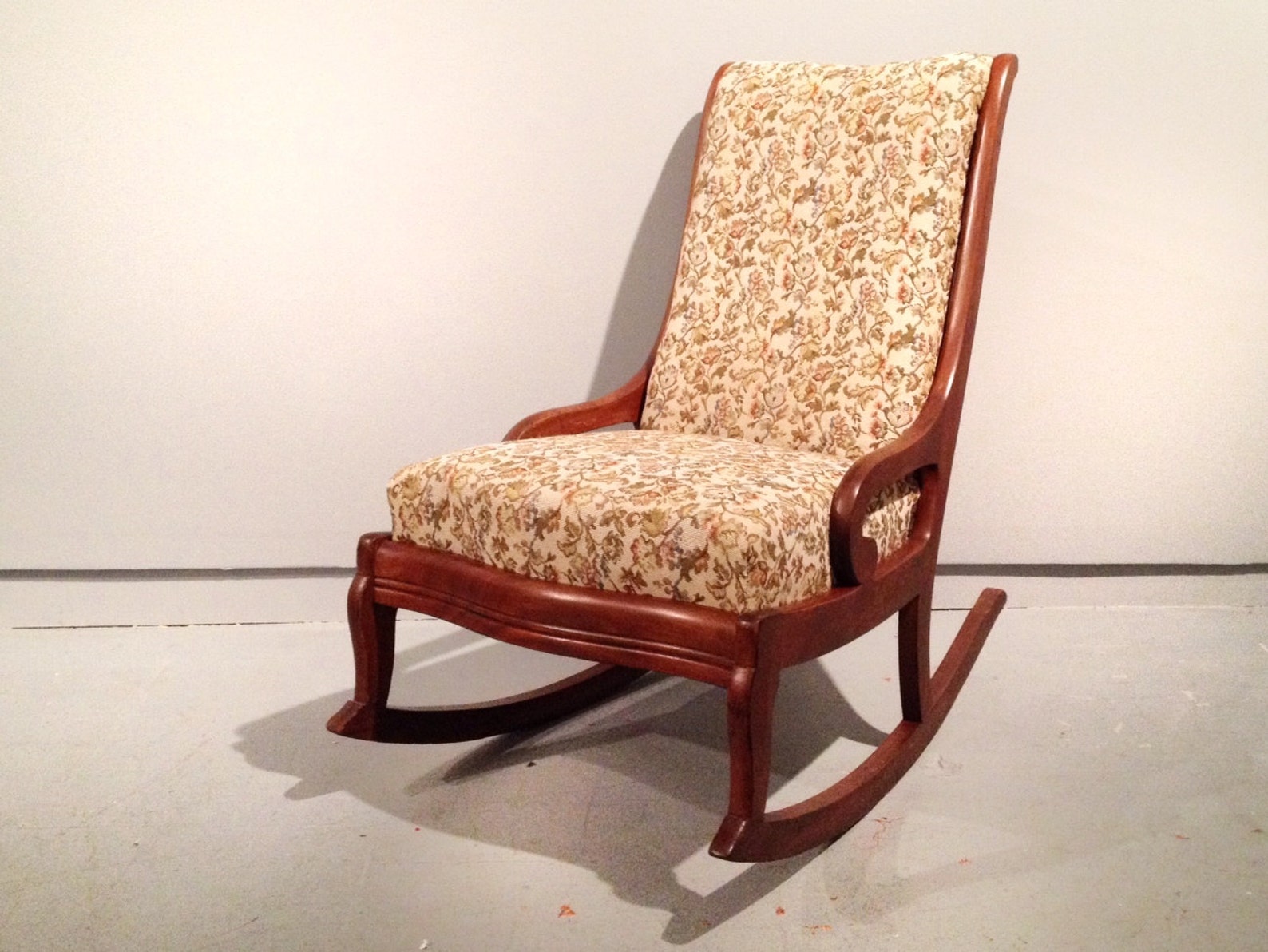Historical Context and Significance

Antique nursing rocking chairs represent a fascinating chapter in the history of healthcare, reflecting evolving medical practices and societal attitudes towards patient care. Their evolution reveals a shift from rigid, uncomfortable medical environments to spaces that prioritize comfort and healing.
The Rise of the Nursing Rocking Chair
The concept of a rocking chair for nursing mothers predates the formalization of the nursing profession. Early examples often served as multi-functional furniture, doubling as cradles for infants or serving as a place for mothers to relax and tend to their household duties. However, the development of hospitals and the rise of professional nursing in the late 19th and early 20th centuries propelled the nursing rocking chair into a specialized medical tool.
Identifying and Evaluating Antique Nursing Rocking Chairs

Antique nursing rocking chairs are cherished pieces of furniture with historical significance and enduring charm. They serve as tangible reminders of the past, reflecting the evolving styles and craftsmanship of their time. Distinguishing these antiques from modern replicas requires a discerning eye and a familiarity with the characteristics that define their authenticity.
Key Features of Antique Nursing Rocking Chairs, Antique nursing rocking chair value
Antique nursing rocking chairs possess distinct features that set them apart from their modern counterparts. These features are a result of the materials, construction techniques, and design trends prevalent during the time of their creation.
- Construction: Antique nursing rocking chairs were often constructed using traditional joinery methods, such as mortise and tenon joints, dovetail joints, and pegged construction. These techniques, while labor-intensive, resulted in furniture that was strong, durable, and resistant to wear and tear. Modern replicas often utilize less traditional methods, such as glue and screws, which can be less durable over time.
- Materials: Antique nursing rocking chairs were typically crafted from solid hardwoods, such as oak, cherry, walnut, mahogany, and maple. These woods were chosen for their strength, durability, and aesthetic appeal. The wood would often be hand-planed and finished with natural oils or waxes. Modern reproductions may use less expensive woods, veneers, or engineered wood products.
- Design: Antique nursing rocking chairs often featured intricate carvings, turned spindles, and decorative hardware. These details were often hand-crafted and reflected the prevailing design styles of the era. Modern reproductions may have simplified or less detailed designs, and the hardware may be mass-produced.
- Upholstery: Antique nursing rocking chairs were typically upholstered in fabrics such as leather, wool, linen, or cotton. These fabrics were often hand-stitched and may show signs of wear and tear over time. Modern reproductions may use more modern upholstery materials, such as synthetic fabrics, that may be less durable.
Common Materials Used in Construction
Antique nursing rocking chairs were crafted from a variety of materials, each contributing to their durability, aesthetics, and overall character.
- Wood Types: The choice of wood often reflected the region where the chair was made and the availability of resources. Common hardwoods used in the construction of antique nursing rocking chairs include:
- Oak: Known for its strength, durability, and distinctive grain pattern. Oak was a popular choice for furniture throughout the 19th and early 20th centuries.
- Cherry: Valued for its rich reddish-brown color, beautiful grain, and ability to take a fine polish. Cherry was often used for furniture intended for formal settings.
- Walnut: Appreciated for its dark brown color, distinctive grain pattern, and durability. Walnut was often used for furniture that was intended to be both elegant and sturdy.
- Mahogany: Known for its deep red-brown color, beautiful grain, and ability to take a high polish. Mahogany was often used for furniture intended for formal settings.
- Maple: Appreciated for its hard, close-grained wood, light color, and ability to take a fine finish. Maple was often used for furniture that was intended to be both durable and elegant.
- Upholstery: The upholstery of antique nursing rocking chairs reflected the prevailing fashion trends and materials available during the time of their creation. Common upholstery materials included:
- Leather: Durable and often used for chairs intended for everyday use. Leather can develop a rich patina over time, adding to its character.
- Wool: A warm and durable fabric often used for chairs intended for formal settings. Wool can be woven into a variety of patterns and textures.
- Linen: A strong and durable fabric that is often used for chairs intended for everyday use. Linen can be woven into a variety of patterns and textures.
- Cotton: A soft and comfortable fabric often used for chairs intended for everyday use. Cotton can be woven into a variety of patterns and textures.
- Hardware: Antique nursing rocking chairs often featured decorative hardware, such as brass or iron nails, screws, hinges, and casters. These hardware elements can provide clues about the chair’s age and origin.
Styles and Designs
Antique nursing rocking chairs reflect the evolving design trends of their time, offering a glimpse into the aesthetics and tastes of different historical periods. Some of the most prevalent styles include:
- Victorian (1837-1901): Victorian nursing rocking chairs were often characterized by ornate carvings, turned spindles, and decorative hardware. They were often upholstered in rich fabrics, such as velvet, damask, or brocade.
- Arts and Crafts (1880-1920): Arts and Crafts nursing rocking chairs were often characterized by simple, functional designs and natural materials. They were often made with hand-crafted details and emphasized the beauty of the wood itself.
- Mission (1900-1930): Mission nursing rocking chairs were often characterized by their simple, geometric designs and use of sturdy hardwoods, such as oak. They were often stained with a dark finish and had a minimalist aesthetic.
- Art Deco (1920-1939): Art Deco nursing rocking chairs were often characterized by their bold geometric patterns, sleek lines, and use of exotic materials, such as ebony, rosewood, and chrome.
Hallmarks of Authenticity and Potential Red Flags
Distinguishing authentic antique nursing rocking chairs from reproductions can be challenging, but careful examination can reveal key indicators of their age and origin.
| Feature | Authentic Antique | Reproduction |
|---|---|---|
| Wood Type | Solid hardwoods, such as oak, cherry, walnut, mahogany, and maple. May show signs of age, such as patina, scratches, or dents. | May use less expensive woods, veneers, or engineered wood products. May have a more uniform appearance. |
| Construction | Traditional joinery methods, such as mortise and tenon joints, dovetail joints, and pegged construction. May show signs of age, such as wear and tear or loose joints. | May use less traditional methods, such as glue and screws. May have a more modern appearance. |
| Hardware | Hand-crafted hardware, such as brass or iron nails, screws, hinges, and casters. May show signs of age, such as patina, scratches, or dents. | May use mass-produced hardware, such as modern screws or nails. May have a more uniform appearance. |
| Upholstery | Hand-stitched upholstery, such as leather, wool, linen, or cotton. May show signs of age, such as wear and tear or fading. | May use modern upholstery materials, such as synthetic fabrics. May have a more uniform appearance. |
| Condition | May show signs of age, such as wear and tear, scratches, dents, or fading. However, the overall structure should be sound. | May appear too perfect or pristine. May have a more uniform appearance. |
Factors Influencing Value: Antique Nursing Rocking Chair Value

The value of an antique nursing rocking chair is determined by a complex interplay of factors, each contributing to its overall desirability and market price. These factors encompass the chair’s physical condition, rarity, provenance, and maker, as well as the presence of unique features and the influence of market trends.
Condition
The condition of an antique nursing rocking chair significantly impacts its value. Chairs in excellent condition, with minimal wear and tear, are highly sought after and command higher prices. Conversely, chairs with significant damage, such as broken parts, loose joints, or extensive wear, are considered less desirable and may fetch lower prices.
- Excellent Condition: Chairs in excellent condition, with minimal wear and tear, are highly sought after and command higher prices. They often retain their original finish, upholstery, and hardware.
- Good Condition: Chairs in good condition may have some minor wear and tear, such as scratches or dents, but are structurally sound. They may require some restoration or refinishing.
- Fair Condition: Chairs in fair condition show significant wear and tear, including broken parts, loose joints, or faded finish. They may require extensive restoration or may be suitable for parts only.
- Poor Condition: Chairs in poor condition are severely damaged and may be beyond repair. They are typically only valuable for salvage or as parts.
Rarity
The rarity of an antique nursing rocking chair plays a crucial role in its value. Chairs produced in limited quantities or with unique features are considered more valuable than those produced in larger numbers. For instance, a chair made by a renowned furniture maker or with a distinctive design element, such as intricate carvings or unusual materials, will likely be more valuable than a more common chair.
Provenance
Provenance refers to the history of ownership and origin of an antique nursing rocking chair. A chair with a documented history, particularly if it has been owned by notable individuals or associated with significant historical events, is considered more valuable than a chair with an unknown provenance. For example, a chair owned by a prominent family or used in a historical home could command a higher price.
Maker
The maker of an antique nursing rocking chair significantly influences its value. Chairs made by renowned furniture makers, such as Duncan Phyfe, Thomas Sheraton, or Chippendale, are highly sought after and command premium prices. The maker’s signature, label, or other identifying marks can help authenticate the chair and establish its value.
Unique Features
Specific features can enhance the value of an antique nursing rocking chair. Intricate carvings, unique materials, or historical associations can increase a chair’s desirability and market price. For example, a chair with hand-carved details, such as floral motifs or scrollwork, or made from exotic woods, such as mahogany or rosewood, will likely be more valuable than a plain chair.
Market Trends
The antique furniture market is subject to trends that can affect the value of antique nursing rocking chairs. Certain styles, periods, or makers may become more or less popular over time, influencing their market prices. For example, chairs from the Victorian era or with Art Deco influences may experience fluctuations in value based on current market trends.
Antique nursing rocking chair value – The value of antique nursing rocking chairs is often determined by their age, condition, and craftsmanship. These chairs were often crafted with intricate details and high-quality materials, reflecting the care and attention given to newborns in the past. The storytime series rocking chair is a modern example that embraces this tradition, offering a comfortable and soothing experience for both child and parent.
Antique nursing rocking chairs can be a valuable investment, especially when they possess historical significance or unique features.
Antique nursing rocking chairs, often crafted with intricate details and sturdy construction, hold significant historical and sentimental value. While their original upholstery may have faded or become worn, shabby chic rocking chair cushions can breathe new life into these cherished pieces.
These cushions, with their soft textures and delicate patterns, complement the antique chair’s charm while providing modern comfort, enhancing both its aesthetic appeal and practicality.